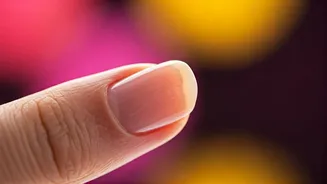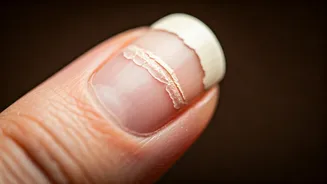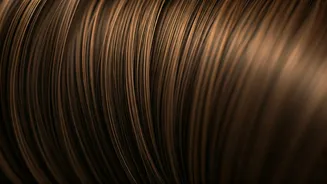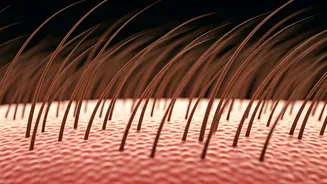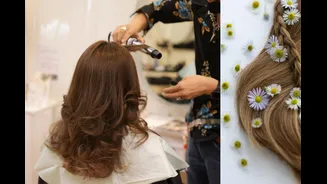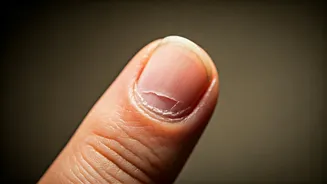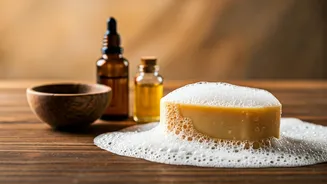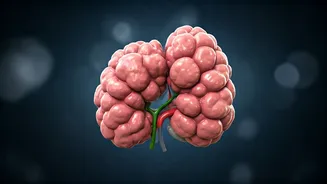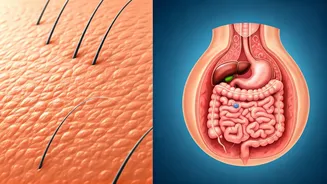Nail Peeling: Overview
Nail peeling, also known as onychoschizia, can be a frustrating problem. It's when the layers of your fingernails or toenails separate and flake off. The
degree of peeling can range from minor surface damage to significant separation of the nail layers. Several factors contribute to this issue, including external factors and underlying health conditions. Understanding the causes is essential for choosing the right treatment and preventing future problems. Nail health often reflects overall health; therefore, taking care of your nails can provide insights into your general well-being. This condition may affect both fingernails and toenails, and the treatment approach varies based on the underlying cause and severity of the peeling.
Medical Causes Unveiled
Several medical conditions can contribute to peeling nails. One of the most common is iron deficiency anemia. Low iron levels can weaken the nails, making them brittle and prone to peeling. Thyroid issues, both hyperthyroidism (overactive thyroid) and hypothyroidism (underactive thyroid), can also affect nail health, leading to changes in their texture and appearance. Certain skin conditions, such as psoriasis and eczema, might affect the nails. In psoriasis, the nails can become pitted, discolored, and separate from the nail bed. Eczema can cause dryness and cracking that affects the nails too. Fungal infections, called onychomycosis, are a frequent cause, resulting in thickening, discoloration, and peeling. If you suspect an underlying medical cause, seeing a healthcare professional for diagnosis and treatment is essential.
External Factors Explained
External factors often play a significant role in nail peeling. Frequent exposure to water, such as washing dishes or swimming, can weaken the nails and make them more susceptible to peeling. Harsh chemicals found in cleaning products, nail polish removers, and certain soaps can strip the nails of their natural oils, leading to dryness and breakage. Nail trauma, like hitting your nails or biting them, can also damage the nail structure. Overuse of nail polish and acrylic nails can contribute to the problem. The constant application and removal of polish, along with the use of harsh chemicals, can weaken the nails. Prolonged exposure to dry air or cold weather can also dry out the nails. The environment plays a role, so considering your surroundings is crucial for nail health.
Effective Remedies Explored
Several remedies can help address peeling nails. Keeping your nails moisturized is essential. Applying hand cream or cuticle oil regularly, especially after washing your hands, can help keep them hydrated and prevent dryness. Avoid using harsh soaps and cleaning products. When cleaning, wear gloves to protect your nails from chemicals and excessive water exposure. Trimming your nails regularly and filing them in one direction helps prevent splitting and breakage. Consider taking biotin supplements, as biotin may improve nail strength and thickness. Seek professional help if a fungal infection is present. Antifungal treatments, either topical or oral, might be necessary. Avoid nail biting and picking as it can worsen the condition. For severe cases, consulting a dermatologist is recommended for personalized treatment plans, which can include prescription-strength moisturizers or other specialized treatments.
Preventative Measures Revealed
Preventing nail peeling involves a combination of lifestyle changes and proper nail care. Keeping your nails hydrated is a cornerstone of prevention. Using a hand cream or cuticle oil regularly helps keep them moisturized. Protect your nails when exposed to water or chemicals. Wearing gloves when washing dishes or cleaning can make a huge difference. Avoid harsh nail treatments. Limiting the use of nail polish, especially those with harsh chemicals, and avoiding acrylic nails can help preserve the natural strength of your nails. Maintain a balanced diet. Ensuring you consume adequate vitamins and minerals, particularly iron and biotin, can contribute to healthy nail growth. Avoid nail-biting and picking. These habits weaken the nails and increase the risk of damage and peeling. Regular check-ups with your doctor can help you detect any underlying medical conditions.
